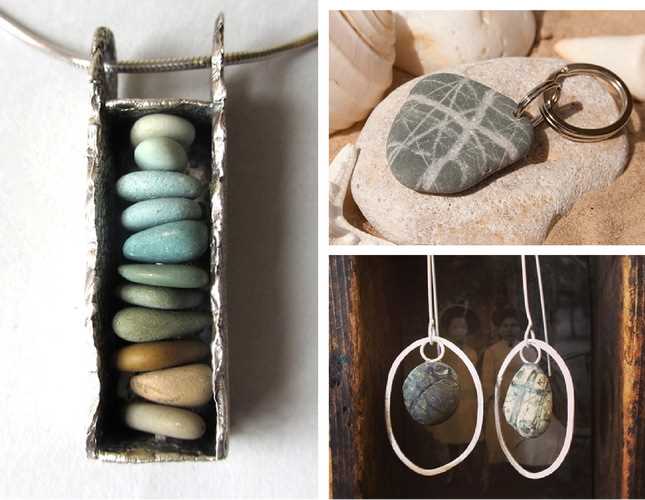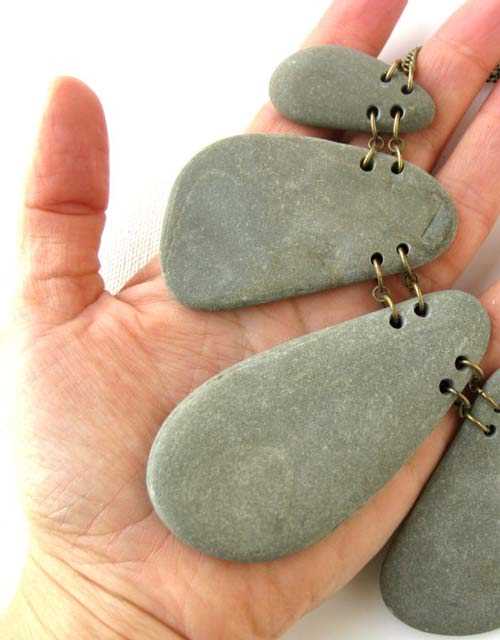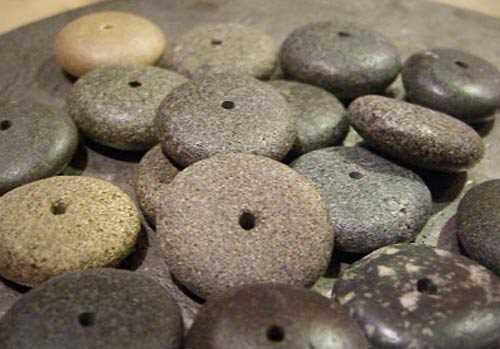Step-by-Step Guide on How to Drill a Hole in a Rock for Jewelry

Drilling a hole in a rock for jewelry can be a daunting task, but with the right tools and techniques, it can be a rewarding and creative endeavor. Whether you want to create a pendant, a bead, or a stone for a ring, drilling a hole in a rock allows you to incorporate unique and natural elements into your jewelry designs.
In this step-by-step guide, we will walk you through the process of drilling a hole in a rock for jewelry, from selecting the right rock to the final polishing touches. Along the way, we will provide tips and tricks to help you achieve the best results and avoid common pitfalls.
First, you’ll need to gather the necessary tools and materials for the project. This includes a suitable rock, a drill press or handheld drill with a diamond-tipped drill bit, water or cutting oil for lubrication, and safety goggles to protect your eyes. It’s important to choose a rock that is durable enough to withstand the drilling process and has a smooth surface for easy drilling.
Once you have all your tools ready, you can begin the drilling process. It’s crucial to take your time and approach the task with precision and care. By following this step-by-step guide, you will be able to create beautiful rock jewelry pieces that showcase the natural beauty of the stones.
Gathering the Necessary Tools
- A rock or stone for drilling
- A diamond tip drill bit
- A power drill
- Water or lubricant
- A sturdy work surface
- Safety goggles
- Gloves
- A mask for dust protection
Before starting the drilling process, it is important to gather all the necessary tools and materials. Here is a list of the tools you will need:
- A rock or stone for drilling: Choose a rock or stone that you want to drill a hole in for your jewelry project. Make sure it is the right size and shape for your intended design.
- A diamond tip drill bit: Diamond tip drill bits are the best choice for drilling hard materials like rocks. They are available in various sizes, so choose a size that matches the diameter of the hole you want to drill.
- A power drill: You will need a power drill with variable speed settings for this project. Make sure it is fully charged or has a sufficient power supply.
- Water or lubricant: Drilling into rocks generates heat, which can damage the drill bit. Using water or a lubricant as a coolant during the drilling process will help to prevent overheating.
- A sturdy work surface: Find a stable work surface, such as a workbench or table, to hold the rock securely while drilling. This will prevent it from moving or slipping during the drilling process.
- Safety goggles: Protect your eyes by wearing safety goggles throughout the drilling process. This will help prevent any rock fragments or debris from getting into your eyes.
- Gloves: Wear gloves to protect your hands from any sharp edges or fragments that may occur during the drilling process. Choose gloves that provide a good grip.
- A mask for dust protection: Drilling into rocks can produce dust, which may be harmful if inhaled. Wear a mask to protect your respiratory system from any dust particles.
Once you have gathered all the necessary tools and materials, you are ready to move on to the next step: preparing the work surface.
Choosing the Right Rock
When it comes to drilling a hole in a rock for jewelry, it is important to choose the right rock that will be suitable for your project. Here are some factors to consider when selecting a rock:
1. Hardness
The hardness of the rock is an important factor to consider. Rocks that are too soft may crumble or chip during the drilling process, while rocks that are too hard may be difficult to drill through. It is recommended to choose a rock with a hardness of 6 or higher on the Mohs scale.
2. Shape and Size
The shape and size of the rock will also play a role in the drilling process. Flat or rounded rocks are easier to work with and provide a stable surface for drilling. Additionally, the size of the rock should be suitable for your jewelry project. Smaller rocks may require more precision and care when drilling.
3. Type of Rock
The type of rock you choose will depend on your personal preference and the design of your jewelry. Some popular choices for drilling include quartz, amethyst, jasper, and agate. These rocks are known for their durability and ability to showcase the jewelry piece.
4. Safety Considerations
It is important to consider the safety aspects when selecting a rock for drilling. Avoid rocks that contain toxic minerals or have sharp edges that could cause injury during the drilling process. Additionally, wearing safety goggles and using a drill press or vise to secure the rock can help prevent accidents.
By considering these factors, you can ensure that you choose the right rock for drilling a hole for your jewelry project. Take your time to find the perfect rock that meets your needs, and always prioritize safety during the drilling process.
Preparing the Rock
Before you start drilling a hole in a rock for jewelry, it is important to properly prepare the rock to ensure the best results. Here are the steps to take:
- Clean the rock: Use a soft brush or cloth to remove any dirt or debris from the surface of the rock. This will help create a clean and smooth drilling surface.
- Mark the drilling spot: Use a pencil or marker to mark the exact spot on the rock where you want to drill the hole. Make sure the mark is visible and centered.
- Select the drill bit: Choose a drill bit that is suitable for drilling into the type of rock you have. For soft rocks, like limestone or sandstone, a carbide or diamond-tipped drill bit will work well. For harder rocks, like granite or basalt, a diamond drill bit is recommended.
- Secure the rock: Place the rock on a stable surface or use a clamp to secure it in place. Ensure that the area around the drilling spot is clear and accessible.
- Wear protective gear: Put on safety goggles, gloves, and a dust mask to protect yourself from any potential hazards, such as flying rock fragments or inhaling dust during the drilling process.
By following these preparation steps, you can ensure that your rock is ready for drilling and minimize the risk of any accidents or damage to the rock.
Marking the Drilling Point
Before you begin drilling a hole in a rock for jewelry, it is important to accurately mark the drilling point. This will ensure precision and avoid any errors or mistakes during the drilling process. Here is a step-by-step guide on how to mark the drilling point:
- Select the rock: Choose a suitable rock for your jewelry project. Ensure that the rock is durable and not too brittle, as it might break during drilling.
- Inspect the rock: Carefully examine the rock to determine the best spot for drilling. Look for a flat and smooth surface where the drilling will be stable.
- Decide on the drilling point: Choose the exact spot on the rock where you want to drill the hole. Keep in mind the size and shape of your jewelry design.
- Measure and mark: Use a ruler or measuring tape to measure the distance from the edge of the rock to the desired drilling point. Mark this measurement with a pencil or a marker.
- Double-check the markings: Take a moment to review the markings and ensure they are accurate. Make any necessary adjustments before proceeding.
By following these steps, you will be able to accurately mark the drilling point on the rock, ensuring that the hole is drilled precisely where you want it to be.
Securing the Rock for Drilling
Before you begin drilling into the rock, it is important to secure it properly to ensure stability and safety. Here are some steps to follow:
- Choose a suitable work surface: Find a sturdy and stable work surface to place your rock on. It should be a flat and level area where you have enough space to work comfortably.
- Use a clamp or vice: If your rock is small enough, you can secure it using a clamp or vice. Position the rock in the desired drilling position and tighten the clamp or vice gently to hold it securely in place. Make sure not to overtighten, as it may damage the rock or cause it to crack.
- Create a stable base: If you are working with a larger rock or one that is irregularly shaped, you can create a stable base using a piece of foam or rubber mat. Place the rock on top of the foam or mat to keep it from rolling or moving around while you drill.
It is important to keep in mind that different rocks require different techniques for securing. So, be sure to assess the stability and shape of your rock before proceeding with the drilling process.
Using the Right Drill Bit

When it comes to drilling a hole in a rock for jewelry, using the right drill bit is essential. There are several types of drill bits that you can choose from, but some are more suitable for drilling through rocks than others. Here are a few options to consider:
- Diamond Core Bits: Diamond core bits are specifically designed for drilling through hard materials like rocks and stones. They feature a diamond-encrusted tip that can easily cut through the toughest surfaces. These drill bits are highly recommended for drilling holes in rocks for jewelry making.
- Carbide Tipped Bits: Carbide tipped bits are another good option for drilling through rocks. They are made with a combination of carbide and steel, which makes them durable and long-lasting. These drill bits are known for their ability to handle tough materials.
- Masonry Bits: Masonry bits are designed for drilling through concrete, stone, and other masonry materials. While they may not be as effective as diamond core or carbide tipped bits, they can still get the job done if you are working with relatively softer rocks.
Before you start drilling, make sure to choose a drill bit that is appropriate for the type of rock you are working with. You can find these drill bits at your local hardware store or online. It’s also important to note that it’s best to use a drill press or a drill stand for stability and precision when drilling through rocks.
Drilling the Hole

Once you have gathered all the necessary materials and ensured your safety, you can start drilling the hole in the rock for your jewelry. Follow these steps:
- Place the rock on a stable surface, such as a workbench or table.
- Secure the rock in place using a clamp or other suitable holding device to prevent it from moving during drilling.
- Select the appropriate drill bit for your project. For drilling small holes in rocks, a diamond-tipped drill bit is recommended.
- Attach the selected drill bit to your drill machine securely.
- Put on safety goggles and a mask to protect your eyes and lungs from dust and debris.
- Position the drill bit on the desired spot on the rock where you want the hole.
- Apply gentle but steady pressure on the drill to start drilling the hole. Begin with a slow speed and gradually increase it as you go.
- Continue drilling until you reach the desired depth or thickness for your jewelry. Take breaks as needed to cool down the drill bit and prevent overheating.
- Once the hole is drilled, remove the rock from the clamp and inspect the hole to ensure it is clean and smooth.
Drilling a hole in a rock requires patience and precision. Take your time and be cautious throughout the process to achieve the best results.
Finishing and Polishing the Hole

After drilling the hole in the rock, it’s essential to finish and polish it to achieve a smooth and professional-looking result. Here are the steps to follow:
- Clean the hole: Use a small brush or compressed air to remove any dust or debris left in the hole from the drilling process. It’s important to have a clean surface for polishing.
- Choose the appropriate polishing tool: Depending on the type of rock and the desired finish, you can use various tools for polishing, such as diamond bits, sanding discs, or polishing pads.
- Start with coarse grit: Begin the polishing process with a coarse grit polishing tool. This will help smoothen the rough edges and any imperfections in the hole. Hold the tool firmly and move it in a circular motion inside the hole. Be patient and allow the tool to do the work. Avoid applying too much pressure, as it may damage the rock or the tool.
- Gradually progress to finer grit: As you work your way through the polishing process, switch to finer grit tools. This will help refine the hole’s surface and create a smoother finish. Repeat the circular motion and continue polishing until you are satisfied with the hole’s appearance.
- Check for smoothness: Once you are done with the polishing process, visually inspect the hole to ensure it is smooth and even. Use your fingers to feel the surface and make any necessary adjustments if needed.
Remember, different rocks may require different polishing techniques, so it’s always a good idea to test the polishing tools on a small, inconspicuous area before working on the entire hole.
FAQ:
What tools do I need to drill a hole in a rock for jewelry?
To drill a hole in a rock for jewelry, you will need a few tools: a diamond-tipped drill bit, a hand drill or rotary tool, masking tape, a spray bottle with water or coolant, safety goggles, and a pair of gloves.
Where can I buy diamond-tipped drill bits for drilling rocks?
Diamond-tipped drill bits for drilling rocks can be purchased at hardware stores, home improvement stores, or online. Some jewelry supply stores may also carry these drill bits.
What kind of rock can I drill a hole in for jewelry?
You can drill a hole in various types of rocks for jewelry, including quartz, jasper, agate, and amethyst. However, it is important to note that some rocks may be harder and more difficult to drill through than others.
How do I choose the right drill bit size for drilling a hole in a rock?
The right drill bit size for drilling a hole in a rock depends on the size of the stone and the desired hole diameter. It is recommended to start with a smaller drill bit and gradually increase the size if needed. You can also refer to the drill bit size chart to determine the appropriate size for your specific needs.
What precautions should I take when drilling a hole in a rock for jewelry?
When drilling a hole in a rock for jewelry, it is important to take several precautions. Wear safety goggles and gloves to protect your eyes and hands from debris. Use masking tape to create a guide for drilling and prevent the drill bit from slipping. Keep the rock and drill bit wet with water or coolant to prevent overheating. Take breaks as needed to avoid overheating the drill bit.
Can I use any type of drill for drilling a hole in a rock?
You can use a hand drill or a rotary tool with a compatible chuck for drilling a hole in a rock. It is important to choose a drill with variable speed settings to ensure better control. Make sure to secure the rock in place before drilling and apply gentle pressure to avoid cracking or damaging the stone.
Video:











